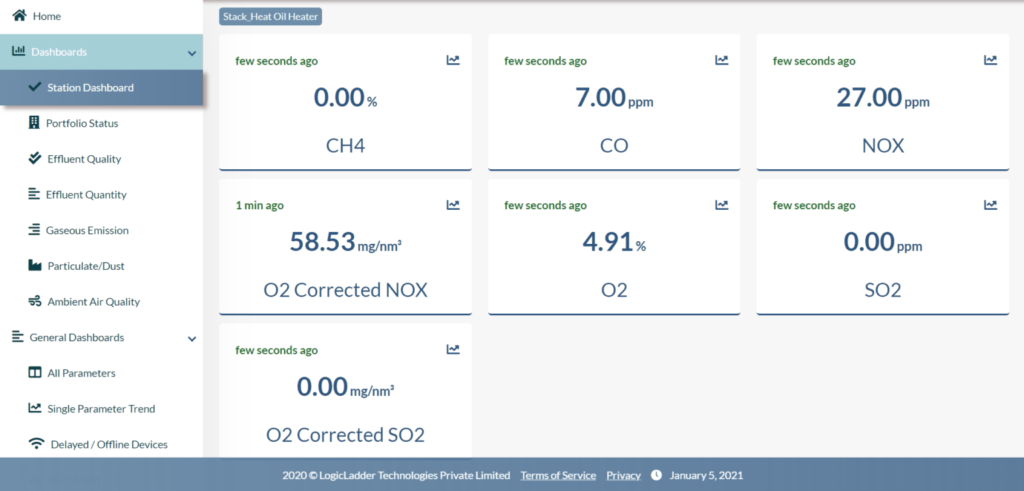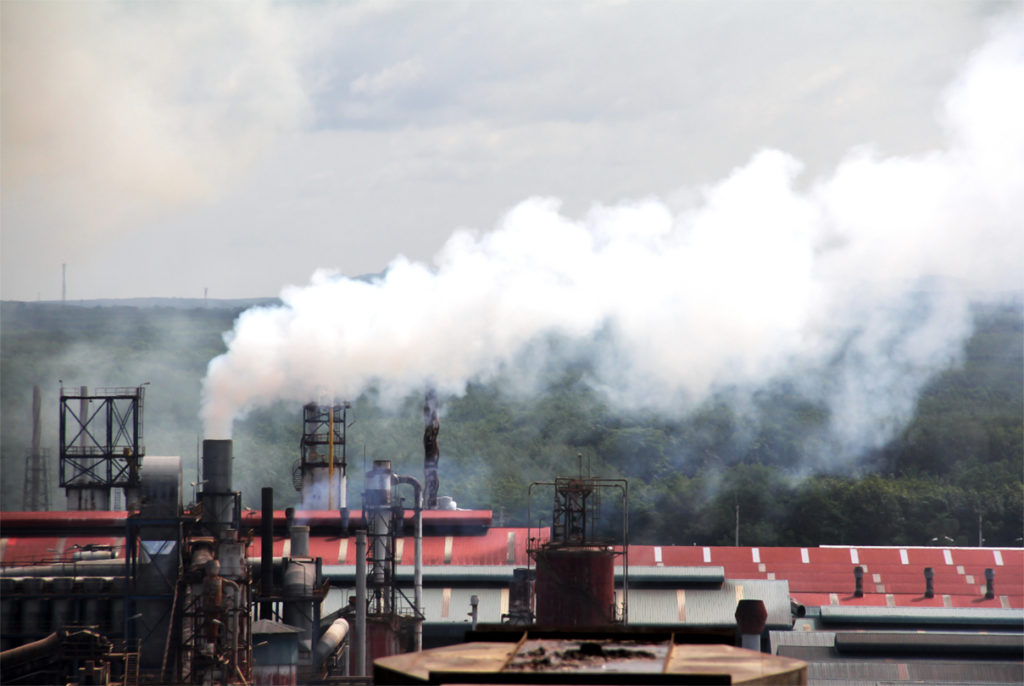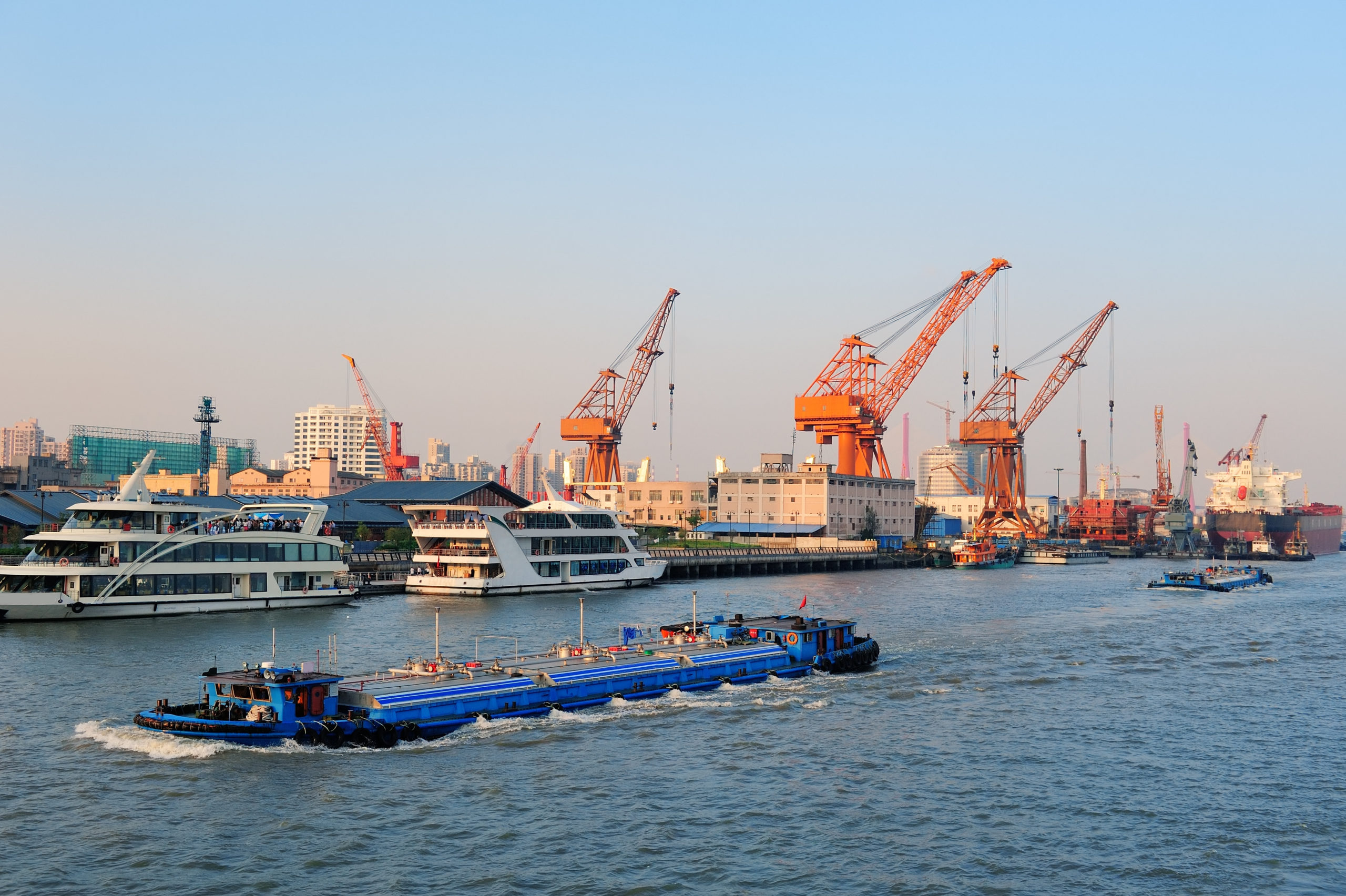You might not be surprised knowing that out of the 30 most polluted cities of the world, 21 belong to India. As 51% of the air pollution source is industrial stack emissions, this demands an urgent need of regulating the parameters of stack emissions thrown by industries into the open air.
So, in this article, you’ll know about the process of stack monitoring, i.e. how it’s done, and why it’s important.
And if you are also looking for a continuous online emission monitoring system, then we’ll also introduce our emission monitoring system – The Sustainability Cloud.
What is a stack?
Defining the term stack, the “Long Height Chimneys” in industries are usually referred to as “stacks”.
They are designed to emit or diffuse hot gases and pollutants at a safe height so that it doesn’t harm the surrounding area nearby the industries.
They are usually installed on Boilers, Furnaces and other Flues.
What is Stack Monitoring?
Stack Monitoring is the process of monitoring the emissions coming out of the stacks to keep a check on the pollutants thrown out in the air.
The major pollutants that stacks emit are Carbon Monoxide(CO), Methane Gas(CH4), oxides of Sulphur, and Nitrogen i.e. SOx and NOx, and hydrocarbon compounds.
How stack monitoring is performed?
The stack monitoring is done with the help of Gas Analyzers which are installed at the exhaust point.
Related: Working of Flue Gas Analyzers
Now, there are essentially two types of stack monitoring systems.
- In-Situ Measurement Method
- Extractive Dilution Method
In in-situ measurement system, the emission sensors are placed directly at or inside the stack for emission parameters monitoring. Whereas, in extractive dilution method, a sample of emission is taken and sent to the analyzers placed away from the emission stack.
Why is continuous monitoring of stack emission parameters important?
Whenever the emission parameters exceed their defined limits, the key authorities monitoring the emission are responsible to take necessary action and ensure that the emission parameters are within the limits.
Many industries still carry out the monitoring process with a periodic framework.
This approach of periodic monitoring, as obvious, wouldn’t allow the plant managers and concerned executives to take necessary action when required.
The delay or improper management makes the industries liable for a penalty by their respective regulatory bodies in their country. In India, the statutory body which is responsible for regulating emission standards to be followed by industries is named as Central Pollution Control Board(CPCB).
Keeping law breachment at one side, the high concentration of emission gases have adverse effects on the local air quality. The parameters if left unchecked possess a threat to human life and other living beings in the surrounding area.
As described above the major pollutants that the emissions carry along are CO, CO2, SOx, NOx and other particulate matters.
If we talk about the detrimental effect of these gases, then the Carbon Monoxide(CO) affects human health by reducing the transport of oxygen supply in our body. This makes it lethal for the human body and it’s also a major greenhouse gas responsible for climate change and global warming.
High levels of Methane in the environment also contributes to the greenhouse effect and global warming. In fact, Methane carries 84 times more potent than CO2 in the short term. So, it’s small amount has quite an adverse effect on the environment.
Similarly, the undesirable limits of sulphur and nitrogen oxides(SOx and NOx) are responsible for causing acid rain which can damage vegetation and sensitive ecosystems.
So, the solution is to go for a continuous emission monitoring solution that will provide real-time data for the emission parameters.
We at LogicLadder, offer a complete online emission monitoring solution which is – The Sustainability Cloud.
What is The Sustainability Cloud?

The Sustainability Cloud is our IIoT based Emission Monitoring System which allows you to monitor emission parameters in real-time.
The data captured with the analyzers is fed into our IoT Gateway which the device pushed into our cloud platform. This allows you an efficient and feasible way of monitoring the emission parameters online from any place.
As its name also indicates that the platform is designed aiming “sustainability” of our environment, it’s not another emission monitoring solution out in the market.
So with our platform, you can also integrate the monitoring of energy, water, and ambient air, allowing you to monitor and manage every aspect of the environmental parameters from a single dashboard.
Get more details on the features and advantages of our Energy Monitoring System, Groundwater Monitoring System, and Effluent Quality Monitoring System.




